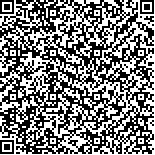| 引用本文: |
郑应康, 陈星海, 朱玺华, 王涛, 颉彦鹏, 蔡萧君.基于多元统计分析和贝叶斯网络的精神分裂症合并超重或肥胖患者的中医证候分析[J].湖南中医药大学学报,2025,45(4):711-718[点击复制] |
|
| |
|
|
| 本文已被:浏览 11次 下载 2次 |
| 基于多元统计分析和贝叶斯网络的精神分裂症合并超重或肥胖患者的中医证候分析 |
| 郑应康,陈星海,朱玺华,王涛,颉彦鹏,蔡萧君 |
| (黑龙江中医药大学, 黑龙江 哈尔滨 150040;黑龙江省中医药科学院, 黑龙江 哈尔滨 150036;黑龙江省第三医院, 黑龙江 北安 164092) |
| 摘要: |
| 目的 探究精神分裂症合并超重或肥胖患者的中医证候规律。方法 采取横断面研究方法,收集2023年6月至2024年6月在黑龙江省第三医院(黑龙江省神经精神病医院)及其分中心门诊就诊和住院的360例精神分裂症合并超重或肥胖患者的中医证候信息,运用因子分析、聚类分析等多元统计分析对其进行降维与归类,提取并归纳基本的中医证素(病位、病性)和辨证分型,运用贝叶斯网络初步探究证候-分型-指标的关联网络特点。结果 共得到9类证候因子和5类证型,涉及脏腑为肝、胆、心、脾、肾;病性为气虚、阳虚、痰、湿、气滞、血瘀、阴虚、火热;辨证分型为心脾两虚、气阴两虚、气滞血瘀、脾肾阳虚、湿郁化火;以身体质量指数(BMI)≥24 kg/m2为目标变量,脾肾阳虚、心脾两虚及湿郁化火证的后验概率位列前三。结论 精神分裂症合并超重或肥胖的中医证型可初步分为5类,其中脾肾阳虚、心脾两虚、湿郁化火证为BMI增高的常见证型,多元统计分析方法可用于探索精神分裂症合并超重或肥胖患者的中医证候规律研究。 |
| 关键词: 精神分裂症合并超重或肥胖 因子分析 聚类分析 多元统计分析 贝叶斯网络 中医证候 |
| DOI:10.3969/j.issn.1674-070X.2025.04.019 |
| 投稿时间:2024-07-05 |
| 基金项目:黑龙江省中医药科研项目(ZHY2020054);黑龙江省博士后基金面上项目(LBH-Z22269);黑龙江省青年人才托举工程项目(2022-QNRC1-30)。 |
|
| Chinese medicine pattern analysis of schizophrenic patients with overweight or obesity based on multivariate statistical analyses and Bayesian network |
| ZHENG Yingkang, CHEN Xinghai, ZHU Xihua, WANG Tao, XIE Yanpeng, CAI Xiaojun |
| (Heilongjiang University of Chinese Medicine, Harbin, Heilongjiang 150040, China;Heilongjiang Academy of Chinese Medicine, Harbin, Heilongjiang 150036, China;The Third Hospital of Heilongjiang Province, Beian, Heilongjiang 164092, China) |
| Abstract: |
| Objective To investigate the Chinese medicine pattern laws in schizophrenia patients with overweight or obesity. Methods A cross-sectional study was conducted, collecting TCM pattern information of 360 schizophrenia patients with overweight or obesity who visited outpatient clinics or were hospitalized at the Third Hospital of Heilongjiang Province (Mental and Neurological Disease Hospital of Heilongjiang Province) and its sub-centers from June 2023 to June 2024. Multivariate statistical analyses, including factor analysis and cluster analysis, were employed for dimensionality reduction and categorization. Basic TCM pattern elements (disease location and nature) and pattern identification types were extracted and summarized. Bayesian network was used to preliminarily explore the relationships of patterns—pattern types—clinical index. Results Nine pattern factors and five pattern types were identified, with the affected organs involving the liver, gallbladder, heart, spleen, and kidney. Disease natures include qi deficiency, yang deficiency, phlegm, dampness, qi stagnation, blood stasis, qi deficiency, and fire-heat. The identified patterns include deficiency of the heart and spleen, dual deficiency of qi and yin, blood stasis due to qi deficiency, yang deficiency of the spleen and kidney, and dampness stagnation transforming into fire. When the target variable was set as the body mass index (BMI)≥24 kg/m2, the posterior probabilities for the patterns of yang deficiency of the spleen and kidney, deficiency of the heart and spleen, and dampness transforming into fire were the top three. Conclusion The TCM patterns in schizophrenia patients with overweight or obesity can be preliminarily categorized into five types. Among them, yang deficiency of the spleen and kidney, deficiency of the heart and spleen, and dampness transforming into fire are common patterns associated with higher BMI. Multivariate statistical analyses can be used to explore the pattern laws in schizophrenia patients with overweight or obesity. |
| Key words: schizophrenia with overweight or obesity factor analysis cluster analysis multivariate statistical analysis Bayesian network Chinese medicine pattern |
|

二维码(扫一下试试看!) |
|
|
|
|




